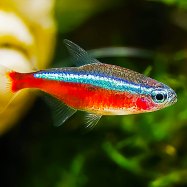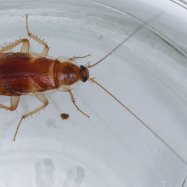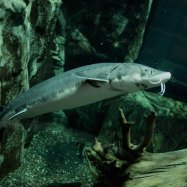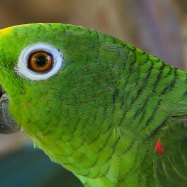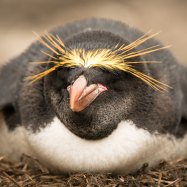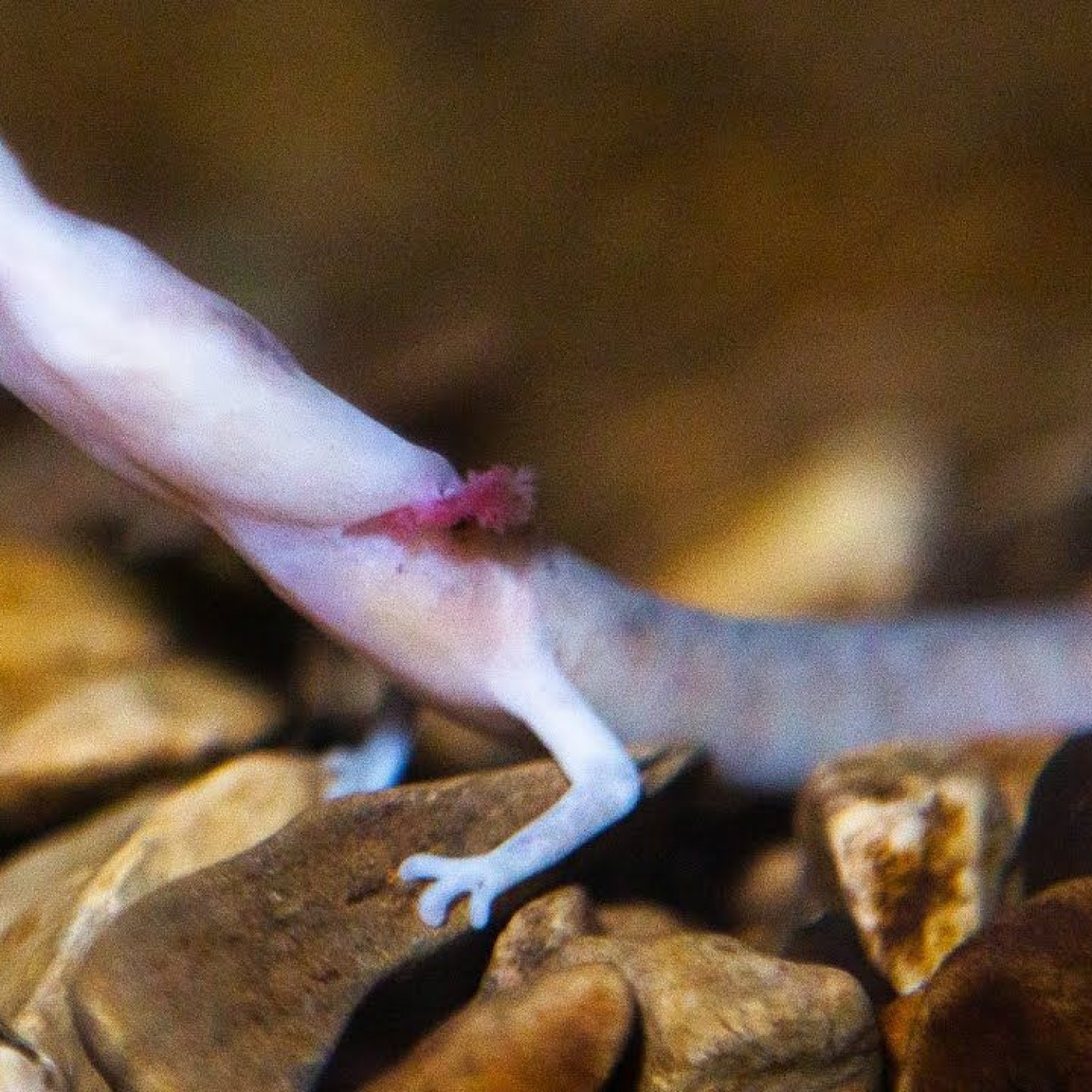
Olm
24-30 centimeters (9.4-11.8 inches)
The Olm, also known as the human fish, is a small amphibian that can be found in caves and underground water systems. Its unique body shape, elongated with small limbs and no external eyes, helps it navigate through its dark habitat. Growing up to 30 centimeters in length, the Olm is a fascinating creature belonging to the Proteidae family.
Animal Details Summary:
Common Name: Olm
Kingdom: Animalia
Habitat: Underground caves and dark aquatic environments
The Fascinating World of the Olm: One of Nature's Most Bizarre Creatures
Nature is full of surprises. It never ceases to amaze us with its creations, and among the most fascinating and bizarre is the Olm, also known as the "human fish." This blind, cave-dwelling amphibian is unlike any other creature on Earth, and its uniqueness has captured the hearts and minds of many naturalists and scientists. In this article, we will dive into the enchanting world of the Olm and uncover its awe-inspiring features that make it truly one of a kind Olm.Scientifically named Proteus anguinus, the Olm belongs to the Animalia kingdom and the Chordata phylum. It is a member of the Amphibia class, and its order is Caudata, commonly known as salamanders. The Olm is part of the Proteidae family, which comprises a small group of aquatic predators.
The Olm is endemic to the Balkans region in Europe, with a geographical distribution that includes Bosnia and Herzegovina, Croatia, and Slovenia. It is commonly found in caves and underground water systems, where it spends its entire life. This elusive creature has captivated the minds of explorers and scientists for centuries, despite its limited distribution.
The Olm has a fascinating feeding method, which is also what gives it its common name, the "human fish." It is a carnivorous creature that feeds on small aquatic animals such as crustaceans, insects, and snails. Its diet is primarily based on olfactory cues, and it has a remarkable ability to detect its prey through chemical signals Oyster. This feeding technique is essential for its survival, as it has poor vision due to its adaptation to dark environments.
The Olm's unique habitat also plays a significant role in its feeding habits. Being a troglobite, an animal that is entirely adapted to live in caves, the Olm has evolved to forage for food in complete darkness. It has well-developed sensory organs that enable it to detect the slightest movements and vibrations of its prey. This amazing adaptation is a result of its underground habitat, where there is little to no sunlight, forcing the Olm to rely on other means to survive.
One of the most intriguing features of the Olm is its exceptional body shape and coloration. It has an elongated body, with small limbs and no external eyes. Its lack of pigmentation gives it a pale pink, nearly translucent appearance, making it almost seem otherworldly. Its body is also covered with a thin layer of skin, which is sensitive to touch and is used for navigation in dark environments.
The Olm's body shape is an adaptation to its underground habitat, where it moves through dark, narrow crevices and cracks. Its small limbs are also useful for maneuvering through tight spaces, and its lack of eyes is due to its adaptation to a life without light.
The average length of an Olm ranges from 24 to 30 centimeters (9.4 to 11.8 inches). Its small size makes it vulnerable to predators, and thus, it has developed unique defensive mechanisms. When threatened, the Olm can release a milky, sticky substance from its skin, which can irritate and deter predators. It can also curl its body into a ball to protect its vital organs.
The Olm's reproductive behavior is also quite fascinating. It reaches sexual maturity at the age of 14-15 years, making it one of the longest-lived salamanders on record. The reproductive process of the Olm is dependent on the water temperature, which regulates the release of sperm and eggs. The female lays around 35 to 70 eggs, which are attached to the walls of the cave. The male then fertilizes the eggs and protects them until they hatch.
The Olm's life cycle is also one of the more intriguing aspects of this creature. It follows a unique pattern called neoteny, which means that it retains its larval features throughout its adult life. This adaptation is crucial to its survival in underground environments with limited resources. It allows the Olm to conserve energy and spend more time in search of food rather than using it for growth and metamorphosis.
Despite its otherworldly appearance and habits, the Olm has a vital role to play in its ecosystem. It is an apex predator in its dark aquatic environment, controlling the populations of smaller animals and helping to maintain the balance of the ecosystem. Its presence also indicates the health of the underground water systems, as it is highly sensitive to water pollution.
The Olm has also played a significant role in mythology and folklore in its native countries. It has been revered as a sacred creature, with many legends and stories surrounding its existence. Some have even believed that the Olm has healing powers, and its eggs were used in traditional medicine.
In recent years, the Olm has faced numerous threats to its survival, with the most significant being the destruction of its natural habitat due to human development. Conservation efforts have been put in place to protect this unique and endangered species, including laws and regulations to protect its habitat and population.
In conclusion, the Olm is undoubtedly one of nature's most bizarre and captivating creatures. Its adaptation to a life in complete darkness has resulted in extraordinary features and behaviors that make it truly one of a kind. As we continue to explore and discover the wonders of our natural world, the Olm will remain a mysterious and fascinating creature, with much left to uncover and learn.

Olm
Animal Details Olm - Scientific Name: Proteus anguinus
- Category: Animals O
- Scientific Name: Proteus anguinus
- Common Name: Olm
- Kingdom: Animalia
- Phylum: Chordata
- Class: Amphibia
- Order: Caudata
- Family: Proteidae
- Habitat: Underground caves and dark aquatic environments
- Feeding Method: Carnivorous
- Geographical Distribution: Balkans region in Europe
- Country of Origin: Bosnia and Herzegovina, Croatia, and Slovenia
- Location: Caves and underground water systems
- Animal Coloration: Pale pink, nearly translucent
- Body Shape: Elongated with small limbs and no external eyes
- Length: 24-30 centimeters (9.4-11.8 inches)
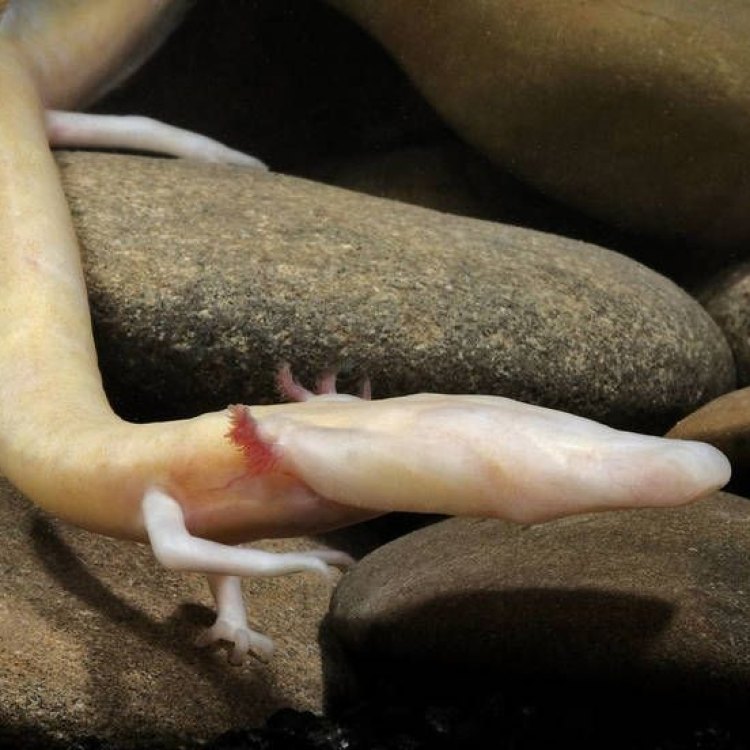
Olm
- Adult Size: 25-30 centimeters (9.8-11.8 inches)
- Average Lifespan: Unconfirmed, possibly up to 100 years
- Reproduction: Oviparous
- Reproductive Behavior: Males perform courtship displays and deposit spermatophores, females pick up spermatophores to fertilize eggs internally
- Sound or Call: No vocalizations
- Migration Pattern: Non-migratory
- Social Groups: Solitary
- Behavior: Nocturnal and regenerative abilities
- Threats: Habitat loss, pollution, and invasive species
- Conservation Status: Vulnerable
- Impact on Ecosystem: Indicator species for the health of underground waters
- Human Use: Occasionally kept as pets
- Distinctive Features: Lack of pigment, external eyes, and large gills
- Interesting Facts: Can go without food for several years, they have a slow metabolism
- Predator: Predators include large fish and birds
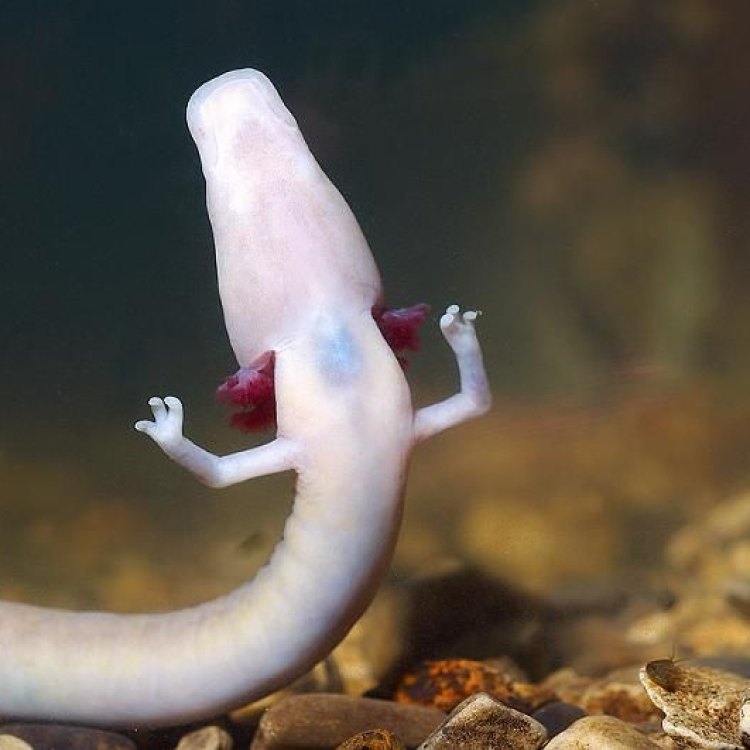
Proteus anguinus
The Incredible Olm: A Mysterious Creature of the Underground World
Deep in the dark underground caves and rivers of Europe, lives a unique and fascinating creature known as the Olm. With its pale, almost translucent skin, lack of eyes, and gills, the Olm may seem like an alien creature from another world. However, this animal is very much of this world and has been around for millions of years, making it a true survivor of evolution.The Olm, also known as the "human fish" due to its skin color, is a species of salamander that belongs to the Proteidae family PeaceOfAnimals.Com. It is the only species in its genus, Proteus, and is found in the underground waters of Slovenia, Bosnia and Herzegovina, Croatia, and Italy. Due to its unique and elusive nature, not much is known about this incredible creature, but researchers and biologists have been working hard to uncover its secrets.
One of the most striking features of the Olm is its adult size, reaching only 25-30 centimeters (9.8-11.8 inches) in length. This makes it one of the largest cave-dwelling animals in the world. Although its size may seem small, the Olm's lifespan is still a mystery. Some believe it can live up to 100 years, making it one of the longest-living amphibians on the planet.
The Olm is an oviparous species, meaning it lays eggs Onagadori Chicken. However, unlike other amphibians, the female Olm does not lay its eggs in water. Instead, it fertilizes its eggs internally after picking up spermatophores deposited by males through their courtship displays. This unique reproductive behavior is just one of the many things that make the Olm a truly remarkable creature.
Unlike most animals that rely on vocalizations or calls to communicate, the Olm is silent. With no vocal cords or vocal sacs, it has no way of producing any sounds. This may be due to its solitary nature, as it is rarely seen in groups or pairs. The Olm is a non-migratory animal, meaning it stays in a specific location and does not partake in seasonal migrations like other species. It is mostly nocturnal, and its solitary behavior helps it avoid potential predators.
Speaking of predators, the Olm is not without its fair share of threats. With its underground habitat being elusive and difficult to access, the main dangers facing this species are habitat loss, pollution, and invasive species. Human activities such as construction, mining, and pollution have greatly impacted the Olm's population and caused its status to become vulnerable according to the International Union for Conservation of Nature (IUCN).
But despite these threats, the Olm plays a crucial role in the ecosystem as an indicator species for the health of underground waters. Its presence or absence can provide valuable insights into the health and stability of these hidden water systems. This is why preserving and protecting the Olm and its habitat is of utmost importance.
Apart from its contributions to the ecosystem, the Olm has also captured the interest of humans. In some cultures, the Olm is considered a symbol of immortality and protection. It has even been depicted in legends and myths as a powerful creature with magical abilities. However, in modern times, the Olm is occasionally kept as a pet by enthusiasts who are captivated by its unique features and behavior. It is a challenging animal to keep in captivity, and special permits are required as it is a protected species in many countries.
Apart from its lack of pigment, external eyes, and large gills, the Olm also has some interesting facts that set it apart from other animals. Due to its slow metabolism, the Olm can survive without food for several years. This adaptation has allowed it to survive in an environment where food availability is scarce. It also has impressive regenerative abilities, capable of regrowing lost limbs and even parts of its brain and heart. These abilities have made the Olm a subject of interest in regenerative medicine research.
As intriguing as the Olm may seem, it is not invincible. Its predators include large fish and birds such as herons. Additionally, the destruction and contamination of its underground habitat continue to pose a significant threat to its survival. This is why conservation efforts, such as habitat restoration and protection, are crucial to ensure the Olm's future existence.
In conclusion, the Olm is a truly remarkable creature that has fascinated scientists and individuals alike for centuries with its unique adaptations and elusive nature. As we continue to learn more about this mysterious animal, let us also strive to protect and preserve its habitat and ensure its survival for future generations to come.
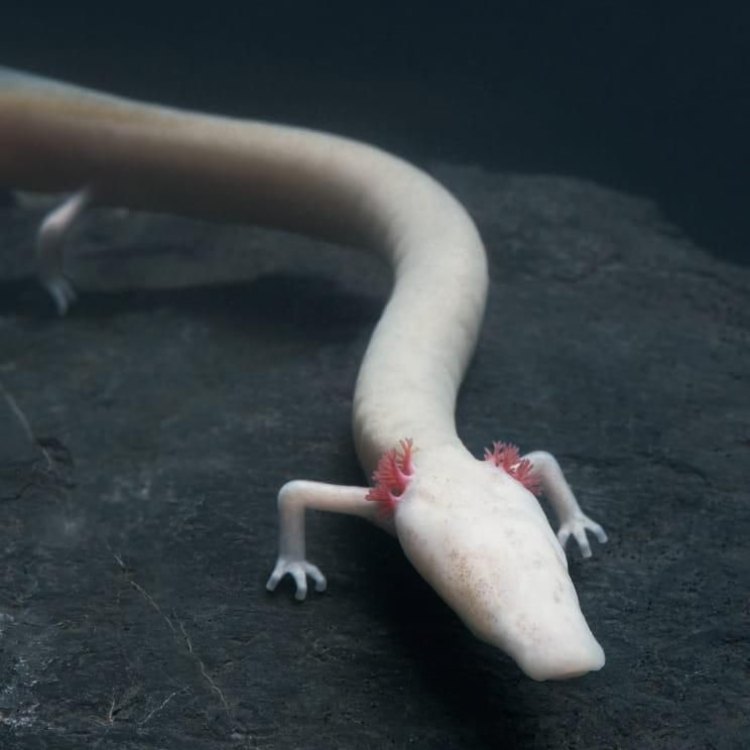
The Fascinating World of the Olm: One of Nature's Most Bizarre Creatures
Disclaimer: The content provided is for informational purposes only. We cannot guarantee the accuracy of the information on this page 100%. All information provided here may change without prior notice.

